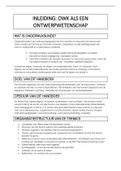College aantekeningen
Summary Lectures International Health Law
- Instelling
- Erasmus Universiteit Rotterdam (EUR)
- Boek
- European health law
Lecture notes study book European Health Law of - ISBN: 9789046607251, Edition: 1, Year of publication: - (-)
[Meer zien]














